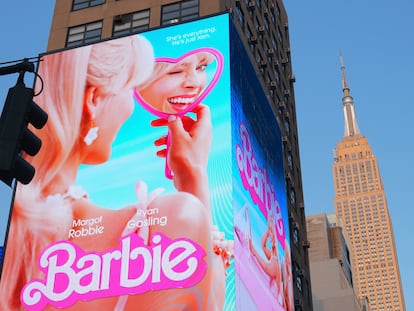From a doll wanted by the FBI to a Sugar Daddy Ken, these are the discontinued Mattel toys that appear in ‘Barbie’
Everyone knows Barbie’s pink tale of success, but not everything is rosy in the story of the iconic doll

A great success story is often also the story of numerous failures. Just ask Mattel, the toy manufacturing company behind the most famous doll of all time: Barbie. The story of this success is well known, particularly these days, thanks to Greta Gerwig’s film: in the 1950s, Ruth Handler, co-founder of the company, noticed how her son Kenneth Handler had more options to play than her daughter Barbara, who had to settle for rocking rag babies. Ruth had seen her daughter cut out female figures from magazines and try to play with them. Then, inspired by a German erotic figurine she found on a trip to Switzerland, Handler created her doll with the intention of sparking the imagination and potential of little girls. Thus, in 1959 Barbie was born, which would go on to become the best-selling doll in the world and a popular icon of the 20th century.
The story of Mattel’s failures, however, is not as well known. Throughout the 64 years of the doll’s life, not every model that has come out of the pink factory has been as welcome as the original Barbie, and many of them have been outright flops. Some were deemed dangerous for children, as they were choking hazards. Others were so strange that the market did not know what to make of them. They all ended up being discontinued. In Barbie, the movie, Mattel has taken these embarrassing episodes out of the drawer and turned them into a group of characters that has not gone unnoticed among fans of the blondest toy of all.
Midge the pregnant doll
In 1963, Mattel decided that Barbie needed a best friend. “Barbie was the dream girl. Midge was the ugly sidekick who might have made a mistake,” MG Lord, author of the essay Forever Barbie: The Unauthorized Biography of a Real Doll, told BuzzFeed News. Midge represented a more imperfect woman than her best friend: she was redheaded, freckled, and dressed less glamorously than Barbie. According to Lord, Mattel’s idea might have been to give “second best” girls a doll they can relate to. It didn’t pan out. She was discontinued in 1964.

However, the idea of Barbie having a best friend was still on Mattel’s mind, so Midge made a series of sporadic appearances in the 1980s and 1990s. Then she returned in 2002, this time pregnant, as she appears in the film. Midge became pregnant almost by obligation: Ruth Handler, the creator of Barbie, never wanted her to have children, as the doll that made millions of girls around the world dream had to represent a period of a woman’s life in which anything was possible — like being an astronaut or the president of the United States — before having family responsibilities. So there was Midge, the eternal sidekick, with a bulging detachable belly from which a tiny plastic baby emerged.
The problem? Midge was sold by herself. Her husband, Allan, was a separate accessory, so Midge seemed like a single mother, and in a society as conservative as America’s, this did not sit well. Some consumers called to boycott Walmart so they would remove the doll from the shelves because, they said, it promoted teenage pregnancy. To avoid controversy, the doll stopped being sold that same year.
Allan, Ken’s best friend
If Barbie needed a Midge, Ken needed an Allan, and he arrived in 1964, one year after Midge. Of course, Midge and Allan were a couple (remember, this is the 1960s we are talking about), so Barbie and Ken now had friends they could go out to dinner with on Friday nights. The problem here was that, if Ken was not exactly Mattel’s star — neither in importance nor in sales — a generic Ken, whose selling point was that he could wear Ken’s clothes, did not stand a chance.
Mattel did not give up and, just like Midge, Allan resurfaced a few times over the decades, the last one being that of the early 2000s, when he was part of Mattel’s Happy Family. He was sold separately, along with the couple’s first child, 3-year-old Ryan. Following the controversy sparked by pregnant Midge, Allan also disappeared.
Growing Up Skipper, the one that grew breasts

In 1964, Mattel introduced Skipper, Barbie’s little sister. In 1975, the company decided it was time for Skipper to go through puberty, so they released one of the strangest toys to date: Growing Up Skipper, the doll that grew breasts. The system was simple: a flat-chested doll that increased her bra size and grew taller when you turned her arm. Mattel’s intention was to normalize puberty, but it almost succeeded in making it much weirder; especially considering that, if you turned the arm in the opposite direction, the breasts disappeared again. Mattel was accused of selling a “perverted” doll and production was discontinued in 1977. However, Skipper remains a part of the Barbieverse.
Earring Magic Ken, the gay doll
“Should Barbie leave Ken or stay with him?” This is the question that Mattel asked a group of girls in the early 1990s to decide the future of Barbie’s boyfriend. The response was that they wanted Barbie to stay with Ken, but Ken had to be cooler, explained the company’s then head of marketing and communications, Lisa McKendall, in the book Brand Failures: The Truth about the 100 Biggest Branding Mistakes of All Time. If Ken wanted approval, he had to get rid of the gelled hair, the bow ties and the tuxedo, and acquire a more modern look.
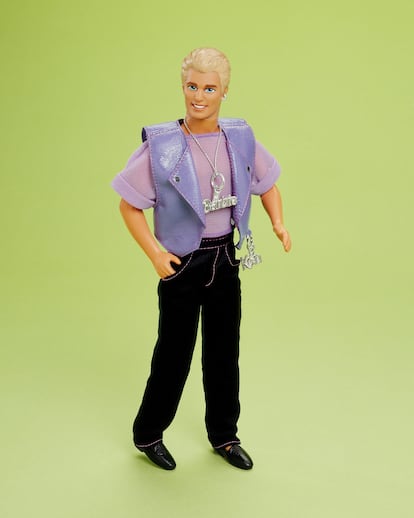
The result was Earring Magic Ken, a doll with platinum blonde hair, a hoop earring, a purple leather vest and a see-through tank top, who quickly became known as Gay Ken. Dan Savage, a journalist specializing in LGTBQ+ issues, wrote a column titled “Ken Comes Out” where he argued that the references to the homosexual world in Barbie’s boyfriend were too obvious to be coincidental. The columnist pointed out that the doll even had a sex accessory known as “cock ring” hanging from its neck. Several outlets supported Savage’s theory, turning Gay Ken into something halfway between an inside joke and a queer icon.
Earring Magic Ken was a bestseller. However, it wasn’t little girls buying it; it was mainly gay men, who had turned it into a fetish doll. Given the frenzy that it was causing in the LGTBQ+ community, conservative groups started to ask Mattel for explanations. The company decided to stop causing controversy and retired this Ken. Today, he is probably the most famous version of Ken of all time.
Teen Talk Barbie
After remaining silent for 33 years, Barbie finally spoke. What did she say? “Math class is tough!” She also said things like “Will we ever have enough clothes?” and “Let’s plan our dream wedding!” Teen Talk Barbie, launched in 1992, was the first Barbie with a voice, and to the surprise of many, everything she said was gender-stereotypical drivel. The string of nonsense that came out of the “mouth” of the once-fantastic doll led to a parody in the episode Lisa vs. Malibu Stacy of The Simpsons, in which Lisa starts a legal battle after discovering that her Malibu Stacy doll said things like “Don’t ask me, I’m just a girl!” Teen Talk Barbie caused enormous controversy: the National Council of Teachers of Mathematics of the United States complained that her phrases discouraged girls and women from pursuing careers in math and science, and the American Association of University Women was scandalized by phrases like “Let’s go shopping!” Mattel even offered non-talking Barbie dolls in exchange for the talking ones. The doll — needless to say — was discontinued.
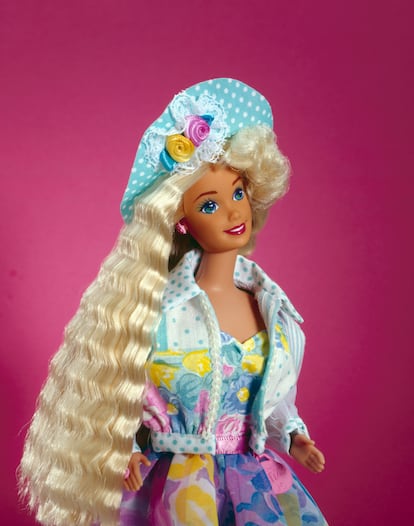
Barbie & Tanner, a bad idea
Perhaps after being a doctor, a journalist, a lawyer and a fashion designer, among 250 other professions, Barbie needed a break. That is why, in 2006, the launch of the season was Barbie & Tanner, an adorable Labrador (you can see it at the Weird Barbie’s house in the movie) that girls could feed small pellets that the puppy would then defecate. It was a strange toy: firstly, because the main form of entertainment it provided was picking up dog poop, and secondly, because many people thought that being a mere dog walker was too mundane an aspiration for the all-powerful Barbie.
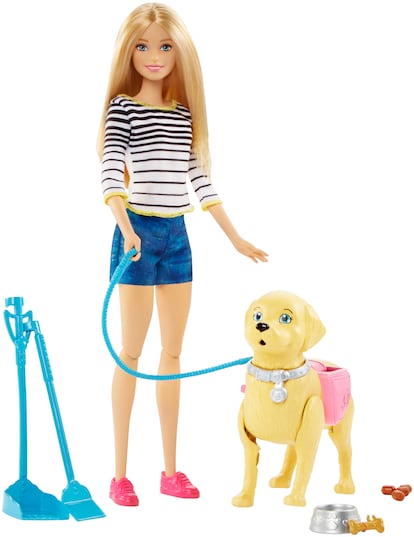
Beyond the controversy, Barbie & Tanner had a manufacturing issue. One of the accessories was a stick to pick up the animal’s droppings, which, according to the United States Consumer Product Safety Commission, contained a dangerous element: a small magnet that, if swallowed, could cause intestinal perforation, infection or blockage, which could be fatal. Mattel issued a recall immediately.
Palm Beach Sugar Daddy Ken
In 2009 Barbie turned 50, and to celebrate, Mattel released a series of special collectors’ editions. This is how a mature and sophisticated version of Ken, which according to the company exemplified fantastic Palm Beach fashion, arrived on the market. This Ken cost $82 and had platinum blonde, almost white hair, wore a green blazer and green pleated pants. He also had a West Highland Terrier named Sugar. This Ken was Sugar’s daddy.
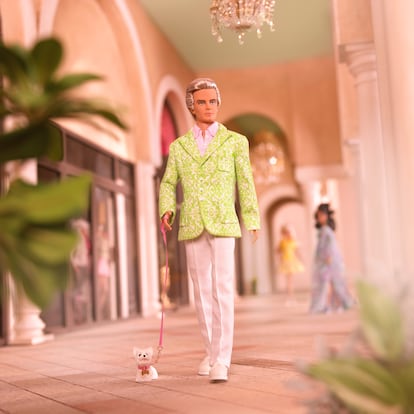
Despite the fact that the doll was not for sale except for collectors, its name raised the eyebrows of many regular consumers of Mattel products, and the company received so many complaints that they had to issue a statement. “He’s Sugar’s daddy, as a reference to the dog,” a company spokeswoman told the New York Post in 2009. It made no difference. Palm Beach Sugar Daddy Ken was withdrawn from the market two years later.
Barbie Video Girl, the doll wanted by the FBI
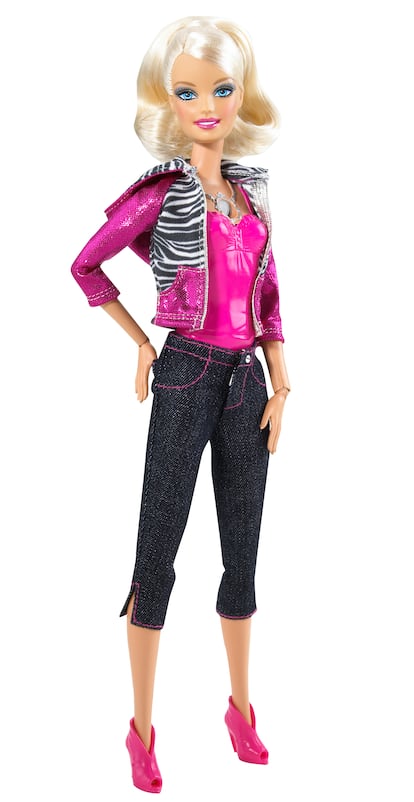
In 2010, Mattel released a doll that had a built-in camera. Barbie Video Girl could record up to 30 minutes of footage through the lens she wore as a necklace, and the video could be viewed on a screen on the doll’s back and uploaded to a computer. The toy was aimed at “future filmmakers.” However, just one year after its launch, the FBI issued a statement warning of its danger, maintaining that this Barbie could be used by pedophiles to record child pornography. Despite the fact that the FBI had no proof that this had ever happened and their argument was based solely on suspicion, it was withdrawn from the market in 2012.
Wheelchair Barbie, finally in the Dreamhouse
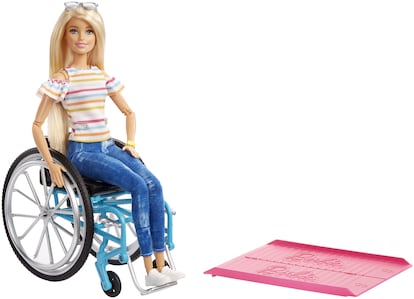
In one of the main scenes of the film, Barbie throws a party in her mansion and all the dolls dance to the rhythm of Dua Lipa. At one point, a Barbie in a wheelchair appears in the middle of the dance floor as part of the performance. This may be a nod to an old Barbie blunder: the first version of the doll that used a wheelchair appeared in 1997. It was Barbie’s friend Becky, a beautiful brown-haired doll with a pink chair. It was an instant hit, selling 6,000 units in the first two weeks. Mattel was praised for giving visibility to people with disabilities. But they had made a mistake: Becky could not fit through the doors of Barbie’s Dreamhouse. Paradoxically, the Malibu house was not adapted for visitors in wheelchairs. “We are looking at the accessibility of all Barbie accessories,” Mattel said at the time. The redesign to make Barbie’s house more accessible never came, and Becky changed — she became a daring photographer in a pink wheelchair and a Paralympian with a prosthetic leg — until she disappeared.
In 2019, Mattel launched an inclusive doll line that included a Barbie (yes, a Barbie!) in a wheelchair. It came with an accessory that did not go unnoticed: a small pink ramp that allowed her to enter her own home. In the film, we can see her triumphantly go all out on the dance floor.
Sign up for our weekly newsletter to get more English-language news coverage from EL PAÍS USA Edition
Tu suscripción se está usando en otro dispositivo
¿Quieres añadir otro usuario a tu suscripción?
Si continúas leyendo en este dispositivo, no se podrá leer en el otro.
FlechaTu suscripción se está usando en otro dispositivo y solo puedes acceder a EL PAÍS desde un dispositivo a la vez.
Si quieres compartir tu cuenta, cambia tu suscripción a la modalidad Premium, así podrás añadir otro usuario. Cada uno accederá con su propia cuenta de email, lo que os permitirá personalizar vuestra experiencia en EL PAÍS.
¿Tienes una suscripción de empresa? Accede aquí para contratar más cuentas.
En el caso de no saber quién está usando tu cuenta, te recomendamos cambiar tu contraseña aquí.
Si decides continuar compartiendo tu cuenta, este mensaje se mostrará en tu dispositivo y en el de la otra persona que está usando tu cuenta de forma indefinida, afectando a tu experiencia de lectura. Puedes consultar aquí los términos y condiciones de la suscripción digital.
More information
Archived In
Últimas noticias
Welcome to the post-religion era: The idea of Christianity as the absolute truth has become obsolete
‘I thought you would like it’: The risky sexual practice popularized by TV shows and TikTok
The digitalization of tourism: ‘They promise experiences and gave us the worst possible one’
Mexican peso defies uncertainty with forecasts of a new period of stability in 2026
Most viewed
- Sinaloa Cartel war is taking its toll on Los Chapitos
- Oona Chaplin: ‘I told James Cameron that I was living in a treehouse and starting a permaculture project with a friend’
- Reinhard Genzel, Nobel laureate in physics: ‘One-minute videos will never give you the truth’
- Why the price of coffee has skyrocketed: from Brazilian plantations to specialty coffee houses
- Silver prices are going crazy: This is what’s fueling the rally

